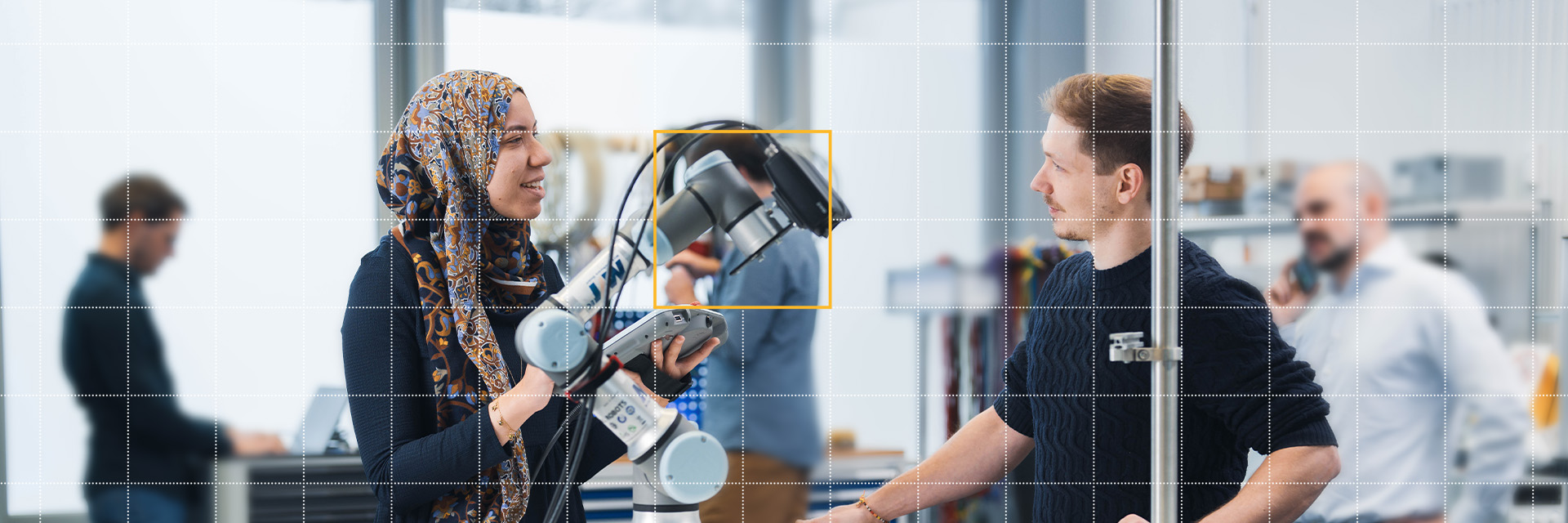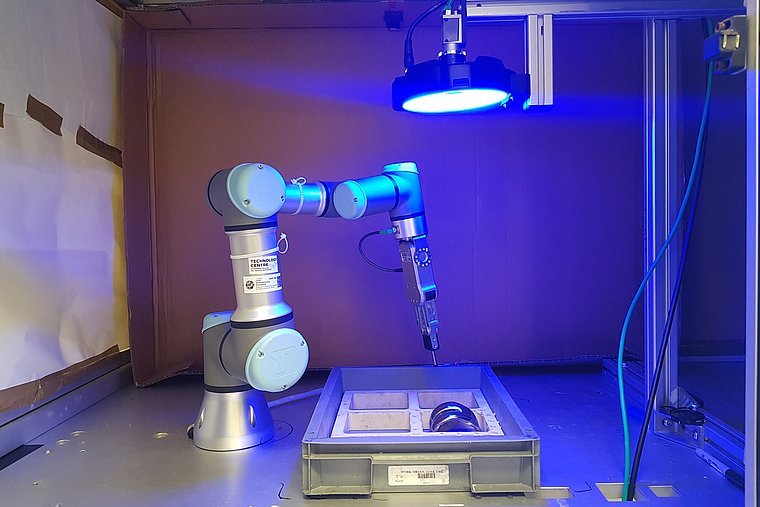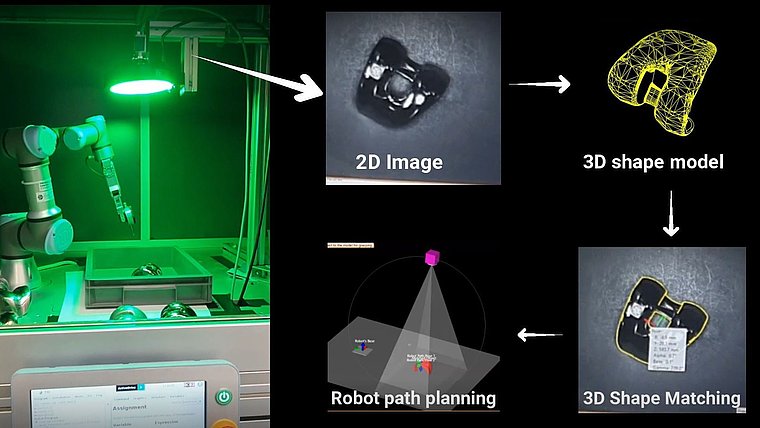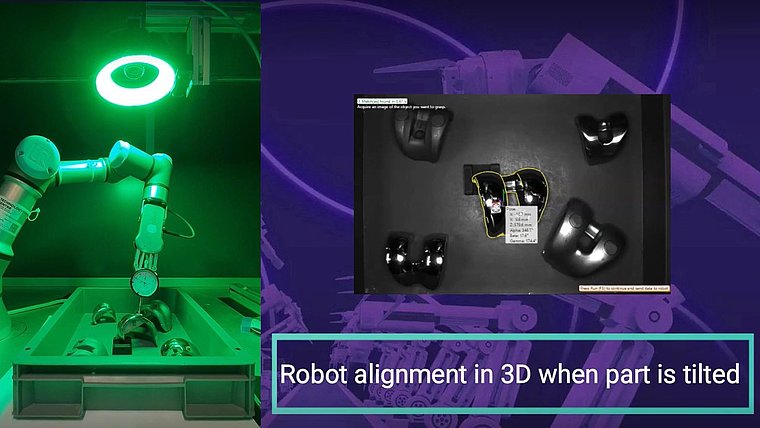
Machine vision enables automated pick and place solution in the medical field
Medical Supplies & Pharmaceutical | Robotics | MatchingIrish Manufacturing Research, together with the companies Multipix Imaging Components Ltd and MVTec Software GmbH, has developed a pick and place robot application for the medical field. Using machine vision software, a robot can recognize reliably and thus process complexly shaped, highly reflective components.
Robots take over pick and place tasks in medical field
Irish Manufacturing Research (IMR) is a leading research and technology institution with a broad portfolio of research, training, and consulting services in Industry 4.0. IMR developed an efficient and cost-effective solution for the medical industry. The pick and place robot is designed to automate the handling of complex components such as knee implants. Until now, it was easier to carry out the activity manually. "The respective robot application was developed with the support of the companies Multipix Imaging and MVTec Software GmbH. MVTec contributed the necessary machine vision software MVTec HALCON. Thus, IMR developed a 3D machine vision application capable of identifying and locating randomly aligned, specular and complex parts for knee implants. This allows the pick and place robot to precisely and repeatably grasp the components and safely deposit them again. High-quality machine vision software was a critical component in the implementation because the nature of the surfaces of the implants is extremely challenging," said Anum Rehman, Senior Researcher at IMR.

Machine vision software enables automated pick and place application
A 6-axis UR3 robot equipped with an end-of-arm tool (gripper) was located in the cell. To provide uniform ambient lighting, a ring light was installed. A 2D industrial camera is used for image acquisition and enables the location of the object. The pick and place machine is controlled by a laptop with the HALCON software installed. The coordinates of the localized parts are then sent via TCP/IP to the robot controller. The robot independently picks up all components, without touching other implants, and sorts them according to where they belong.

Millimeter precision interaction between hardware and software
During implementation, the difficulty laid in the wide variance of the surfaces from matte to highly reflective, as well as the complexly shaped forms. The parts must be processed in six degrees of freedom (DoF) to an accuracy of +/- 3 mm. Add to that challenges posed by the process environment: Parts are obscured by container walls, randomly arranged and must be gripped and deposited from containers of different sizes. In addition, cycle times should be less than 15 seconds. Finally, the customer requires a single system that can be implemented across all polishing stages. Finally, operation and cooperation with a pick and place robot should be feasible with parts in a semi-structured configuration.

Powerful machine vision software MVTec HALCON makes robots see
The relevant HALCON technology for the pick and place application was Shape-Based 3D Matching. This shape-based matching technology finds objects accurately and robustly. It works even when the parts are rotated, scaled, perspectively distorted, locally deformed, partially occluded or out of the image, or subject to non-linear illumination variations. When picking the part, a 2D camera image provides the profile of the part. This is compared to the 3D CAD profiles stored in HALCON. Based on this, the software determines the optimal part profile and sends the corresponding 3D coordinates to the robot.
The seeing robot convinces customers from medical industry
The automated, robot-based application has met IMR's customers' expectations in terms of reliability, efficiency and cost. As a result, IMR is already developing other projects using robots and HALCON machine vision software. Simon Hickman of Multipix Imaging also sees benefits of automation for other applications and industries: "We are confident that more healthcare companies will benefit from the combination of robots and machine vision software. For example, we see numerous future applications in quality control and robotic applications for pick and place."
The images of the products/brands are subject to the copyright of IMR. All rights reserved.
